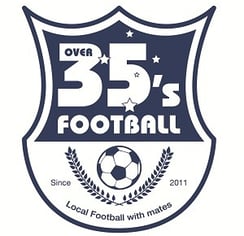OUR GAME
Powerchair Football is an adapted version of the world game of football. Two teams of four hit and spin a 13-inch football on a regular-size basketball court. The game is played by players who use powerchairs for their everyday mobility.
history
Powerchair football was first played in France in the 1970s when teachers invented the sport as a way for students to play football even with physical disabilities. A league system with 3 divisions and 30 teams was developed along with a national championship. Canada devised a similar game called power soccer independently from France, which eventually spread to Japan. Various forms of the sport continued to develop concurrently throughout Europe and North America.
Rules
The sport is played in on a standard-sized basketball court. Each team is allowed 4 players on the court at one time including the goalkeepr. A match consists of two 20-minute periods. Because of the two-dimensional aspect of this game (players are typically unable to kick the ball into the air), artificial space has to be created around the players.
The two distinct differences in the laws from the able bodied game are:
"2-on-1": Two players on the same team may not both be within 3 m (10 ft) of the ball when a player on the opposing team is also within 3 m of the ball. A violation of this rule results in an indirect free kick. This forces the players to spread the field and prevents clogging up of play, allowing for a greater free flow of play. The only exception to this rule is if one of the two teammates is the goalkeeper inside their own goal area.
"3-in-the-goal-area". A team may only have 2 players in the goal area at once. If a third (or fourth) player enters then the referee may call a goal area violation and award an indirect free kick to the opposing team.
In the case of either of these infractions (2-on-1 or 3-in-the-area), the referee may refrain from making a call if the player in question is not affecting the play (similar to the concept of offside in traditional soccer).
Additionally, because many players do not have the upper body strength to throw the ball with their arms, when the ball crosses the touchline, the ball is kicked directly back into play. In other words, instead of a throw-in from the sideline, powerchair football has a kick-in where players strike the ball with their powerchair. Because of this change a goal can be scored directly from a kick-in.
Intentionally striking or ramming another player may result in a penalty
The full rules of the game can be found at: https://fipfa.org/laws-of-the-game/
Equipment
Players are required to use a powerchair with 4 or more wheels. The maximum allowable speed during a match is 10 km/h (6.2 mph), and the referees will inspect the players' speed before the match begins. A lap belt and foot guard are also required equipment. The ball is an oversized soccer ball, 13 inches (33 cm) in diameter.
In 2012, the first power wheelchair specifically designed for powerchair football was introduced. Named the Strikeforce, it has a longer foot guard and wheels that are set further apart. It is also far more responsive than older powerchairs that were previously used.












